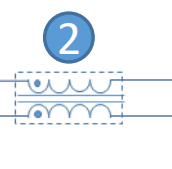Industrial manufacturing in the last decade has seen significant transformations with the introduction of industry 4.0 and IIoT. Manufacturing companies are becoming more reliant on automation in their digital transformation, and one recent advancement is the introduction of Single Pair Ethernet (SPE). In this article, we will take a look at Bourns Single Pair Ethernet solutions for the industrial automation industry.
What is Single Pair Ethernet?
Single Pair Ethernet (SPE) is a new communication method based on the already existing Ethernet technology. As the name suggests, it is made up of a single pair of copper wires instead of the traditional 4-pair of twisted cable or multi-pair ethernet (MPE). SPE also supports power over data lines (PoDL) up to 50W, best suited for the IIoT and Industry 4.0.
The technology is intended to simplify the device-to-device communication process while also improving performance over typical Ethernet protocols and lowering costs. The technology was primarily driven by the automotive sector. If you read our article on sensor technology in the automobile industry, you’ll see how many sensors are needed to fully automate modern vehicles and make them safer. These sensors necessitate a significant quantity of cabling infrastructure, and prior solutions presented numerous issues.
Bourns Single Pair Ethernet Solutions

Figure 1 shows the block diagram of Single Pair Ethernet circuits between two compatible devices. There are some critical components within this diagram that are essential for the operation of SPE. These are:
- Discrete chip LAN transformer
- Chip side common mode choke
- Line slide common mode choke
- TVS diode array OV protection

Discrete chip LAN transformer – This small, centre-tapped transformer is wound on a drum core and capped with a ferrite plate to emulate the relative magnetic path of a toroid core. The centre tap allows for common-mode suppression even without an extra common mode filter. This discrete shielded transformer helps to reduce efforts in EMI troubleshooting. Bourns’ fully automated production process contributes to higher component uniformity and promotes consistent quality and improved reliability. This automated production process can achieve high-volume, cost-effective production with a shorter lead time.

Chip side common mode choke - Chip common-mode Filter is a small chip inductor with ferrite core and two-line types of wire wounded. There is almost no distortion on the high-speed signal. Highly effective in noise suppression high common-mode impedance at noise band and low differential mode impedance at signal band, low differential mode impedance with high coupling facto

Line side common mode choke - On a common mode choke, the core material keeps the windings coupled together. By contrast, the single choke or single winding inductors have just one winding on the one core. This is a chart showing the difference in common-mode impedance. A common mode choke would have common-mode impedances to suppress unwanted common-mode noise. It would be beneficial for a communication or signal application to have deficient differential noise suppression on the Common Mode Choke.

Dual differential mode choke – Differential-mode choke is used to filter electrical noise signal that appears on each of two lines (high and low line) of a closed-loop, with current flowing in opposite directions. Sometimes a differential mode inductor is used, one on each high line and another on the low line. Check the common mode choke from Bourns.
TVS diode array – These diode arrays essentially protect the circuit from any sudden electrostatic discharge (ESD). This is essential to any electrical system that is sensitive to this sort of interference, especially in communication systems such as SPE. Check out the Bourns ESD diode.
Bourns Leading in Quality
Bourns are one of many leading components manufacturers for Single Pair Ethernet in industrial applications such as the Automotive industry. Their components conform to the IEEE802.3 Ethernet standards and IEC 63171, ensuring the highest quality and robustness of the Single Pair Ethernet protocols. Using the single networking protocol dramatically simplifies the network infrastructure complexities whilst reducing overall costs.











